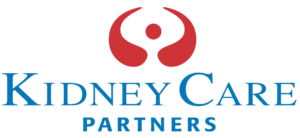December 19, 2005
MINUTES
KIDNEY CARE QUALITY INITIATIVE CLINICAL MEASURES WORK GROUP
DECEMBER 19, 2005
CONFERENCE CALL
Attendees:
Bill Haley, Facilitator Leader
Charlie McAllister
Jerry Yee
Kathy Lester, Patton Boggs and Kidney Care Partners
Julie Black, Patton Boggs
Not in Attendance:
John Burkart
Allan Collins
Summary
The Kidney Care Quality Initiative (KCQI) Clinical Measures Work Group reviewed the recommendations of the Steering Committee and finalized the measures for which evidence tables will be generated.
Approval of Minutes
Minutes were approved with minor amendments.
Discussion of Steering Committee Comments
The Work Group requested that a methodologist be included on the Work Group for Phase II. Ms. Lester will present the recommendation to the Steering Committee.
Drs. Haley and McAllister reported on the Steering Committee’s reaction to the Work Group’s recommendations. He noted that the Steering Committee suggested better definitions and endpoints for dialysis measures, especially in the area of anemia.
The committee recommended that CKD measures be presented as a separate section with better-defined areas, such as anemia management goals. The Pediatrics Work Group will attach specific measures to the Work Group’s document.
The Committee also recommended that each group set forth a research agenda.
The Committee requested that the Work Group establish weights for the measures. The work group debated the Steering Committee’s expectations for the way in which the group should weight measures.
In weighting, utilities must be considered, which raises the question of perspective. Dr. McAllister shared that DaVita’s Quality Index was developed through identification of areas in which opportunity for improvement exist. In addition, DaVita examined clinical utility, whether measures were actionable by doctor and unit, and whether resources were available to address the area. Dr. Haley and Dr. McAllister agreed to draft a document for the Steering Committee to review.
The members agreed to recommend pilot testing of calcium and phosphorus measures because there is not enough evidence-based literature to fully implement them.
Discussion of CKD Measures
During the last call, the members identified types of CKD measures, but they did not determine whether these measures should be included in Phase I. With regard to hypertension, the measures selected were piloted by RPA. To obtain this data, G-codes or chart extraction are necessary.
The group concluded that hypertension is a development measure.
With respect to anemia measures, the members determined that extracting the percentage of patients who are anemic and on iron therapy requires the use of G-codes, CPT codes, or other administrative codes.
The percentage of patients who are iron replete and are receiving EPO is a treatment measure, which could be extracted from administrative data.
The members also discussed bone metabolism measures. With respect to PTH, the members agreed that the measure may be overdone. However, they agreed to consider the percentage of patients on phosphate binder, so that facilities/providers/physicians can monitor PTH. The group reached consensus that measuring phosphorus over the upper limit of normal is also overdone.
For Phase II, the members expressed interest in developing measures for immunizations, anemia, and blood pressure.
Generally, the members hope to examine measures that advance public health.
The members agreed upon including CKD hypertension and treatment of anemia as process measures. In the final report, the work group will mention measures that were not chosen and rationale for the group’s decision.
Discussion of Development of Evidence Tables
The staff will develop evidence tables for the ESRD and three CKD measures from the available information; the work group members will finalize the tables with additional information.
Next Steps
The staff will prepare a draft of the evidence tables and circulate.
